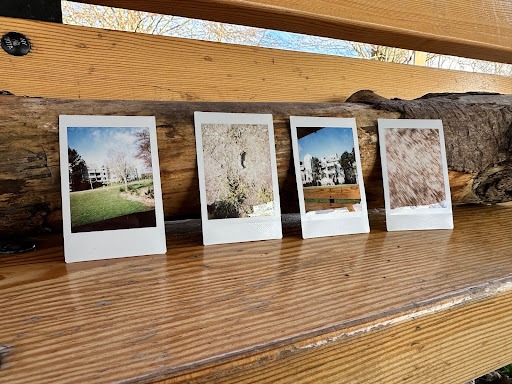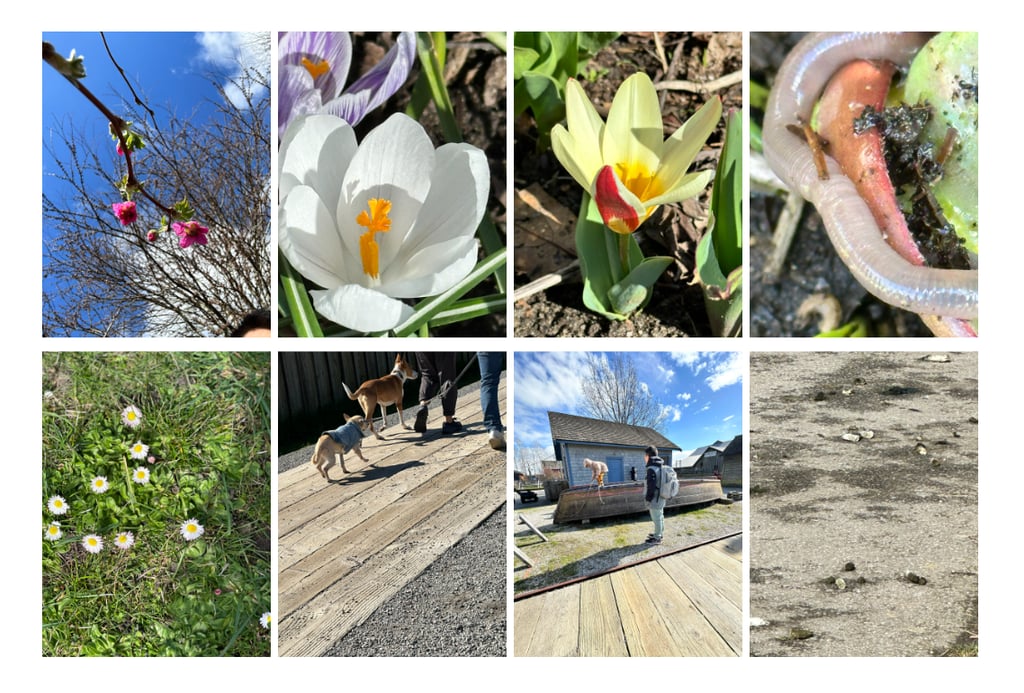Researcher’s Note: Shop Signs in Lansdowne Mall
RESEARCH
Bryant Goh
4/7/20257 min read
When educators engage in photo documentation, it is typically done using a cellphone’s built-in camera or a digital camera, with grown-ups or educators assuming full responsibility for capturing images of children at play and work. However, this approach raises an important question: What might documentation of learning look like if children were empowered to take charge of the process themselves?
A common hesitation is rooted in underestimating children’s ability to manage photo-taking equipment responsibly. This skepticism often stems from a tendency to belittle children’s capabilities, and assume that they lack the maturity to handle such tasks. Yet, if educators were to take a leap of faith and equip children with cameras, teaching them to capture moments they find meaningful, this faithful leap could very well yield surprising and invaluable results.
Referencing a study conducted by Bakar (2021), children became competent users of digital cameras and were also capable of taking good photos when they received the appropriate amount of instruction, guidance and were told about the rules of usage.
In addition to the established knowledge contributed by Bakar that children can become competent at handling phototaking equipment and taking good photos, it is also vital to be cognisant that adults’ interpretations of photo documentation are shaped entirely by our perceptions of how the world operates. This awareness is undoubtedly crucial to bear in mind, as what we might think is a highlight of the child’s activity might contrastingly be a dull moment for the child, and there could have been something else within the activity which could have been a highlight for the child.
These interpretations, deeply influenced by our own lived experiences and cultural contexts, point to a broader concept highlighted in hermeneutic phenomenology which holds the idea that all individuals perceive and interpret experiences in unique ways. This perspective bridges the gap, emphasizing that experiences present themselves differently to each person, influenced by emotions, memories, and associations.
When children are given the tools to appropriately and proactively engage in the world around them, they would be able to experience learning differently as opposed to passively learning about the world by being taught through books or knowledgeable others (Byrnes & Wasik, 2009). The aforementioned is vital to note, especially in the notion of “hermeneutic phenomenology” whereby experiences are perceived, understood and interpreted differently. Experiences present themselves to us in our daily lives, and everyone may associate different emotions and memories, thus creating and attaching meaning to them in different ways from one person to another. In boldly relating experiences as a subset of phenomena, one’s perception and interpretation of any phenomena “is open to revision and reinterpretation: it is about an openness to meaning and to possible experiences” (Henriksson & Friesen, 2012, p. 1).
In another study, conducted by Einarsdottir (2005), it was found that children with digital cameras who were in the company of adults were less likely to take pictures consisting of unique content. In contrast, unaccompanied children had the tendency to take more photos, which were more aligned with their perspective and inquiry. As such, empowering children to document their own experiences could provide unique insights into how they understand and interact with their world. Rather than educators or grown-ups taking on the mantle of orchestrating and directing an experience like a film director, educators could afford to withhold passing on advice or a comment that is not otherwise required by children and simply wait by observing what unfolds with the children. To respond in time, rather than reacting on impulse, could afford children under the care of educators and caretakers more authentic ways of living well and being with an experience.
Which of the following pictures was taken by children?


All the pictures above were taken by children. These photographs offer grown-ups (educators, caregivers, parents, guardians) a peek into the world of the children, to learn about the things that catch the children's interest.


Understanding the World Through Children's Eyes
Children's photographs offer grown-ups—educators, caregivers, parents, and guardians—a unique glimpse into their world, allowing them to learn about the things that capture children's attention and imagination. These images reveal perspectives that are shaped by a child's physical stature, developing cognition, and natural curiosity.
Unlike grown-ups, children view the world from their own eye level. This means they often focus on details closer to the ground—objects like twigs, leaves, low-hanging tree branches, or even shop signs—elements that might escape an adult's notice. Their field of vision can also be obscured by undergrowth, debris, or other physical barriers, further shaping the way they perceive and interact with their surroundings.
These photographs act as windows into the minds of children, highlighting their interests, thought processes, and emotional responses to what they see. For grown-ups, this provides an opportunity to bridge the gap between two distinct perspectives—the broader view of an adult and the close-up wonder of a child. By examining these images, adults can gain a deeper understanding of what captivates and inspires children, fostering connections and encouraging meaningful dialogue.
The act of photography itself empowers children to take ownership of their observations, enabling them to document their discoveries and share their stories. Whether it's the vibrant colors of a shop sign or the intricate patterns of light and shadow, the details captured in their photos serve as valuable expressions of their individuality.
In addition, the process of creating these photographs promotes sustained attention. Children must engage in thoughtful decisions—choosing their subject, framing their shot, and patiently waiting for the film to develop. This focused engagement not only enhances their ability to concentrate but also encourages mindfulness and creativity.
Ultimately, these photographs remind grown-ups of the richness and complexity of a child's perspective. By appreciating the world through their eyes, adults can find new ways to nurture children's curiosity, encourage self-expression, and deepen their understanding of the unique way children experience and interpret their environment.
Researcher’s Reflection on the Narrative Story
Purposeful Delayed Gratification Through Instax Cameras
The children were equipped with Fujifilm Instax Cameras, which was a thoughtful choice that introduced them to a world of instant photography while fostering essential life skills. Unlike cellphones with built-in cameras that deliver instant results, these cameras offered something unique: a moment of anticipation. Watching the Instax film eject from the camera and waiting for the picture to develop served as a gentle yet profound lesson in delayed gratification. It taught the children that some outcomes require patience, reminding them that not everything was within their immediate control, just like the process of film development.
Instilling Mindfulness Through Limited Film
The limited number of shots per Instax film cartridge added another layer of intentionality. With only a handful of opportunities to capture a perfect moment, children had to think carefully about what they wanted to preserve on physical film. This scarcity encouraged them to slow down and thoughtfully frame their shots, contrasting sharply with the endless stream of photos they could snap on a cellphone. By taking the time to look through the camera’s viewfinder and composing their shots deliberately, they potentially cultivated a sense of mindfulness and artistry.
Mentorship and Organic Learning
The Instax cameras also facilitated informal guidance and organic learning. As situations arose, adults such as Ben could step in to offer advice and support, helping the children refine their photography skills. This adaptive mentorship enhanced the children’s understanding of concepts like composition and color balance, empowering them to take better photos and deepen their appreciation for the creative process.
Developing Sustained Attention Through Deliberate Actions
The process of using Fujifilm Instax cameras also required the children to engage in focused, deliberate actions, which naturally cultivated their ability to sustain attention. Unlike the fleeting interactions associated with digital cameras on cellphones or the mere idea of telling children nuggets of information that don’t necessarily matter to them, the Instax experience created the opportunity to invite children to slow down, immerse themselves and become invested in the present moment of what matters the most.
From the beginning, choosing the subject, composing the shot, and adjusting the frame, children are drawn into an intentional sequence of steps. Each decision requires thoughtfulness and concentration, as they aim to capture their chosen scene in the limited film available. This attentiveness is further reinforced by the anticipation of seeing the physical photograph develop, encouraging them to stay engaged with the process rather than seeking instant results.
Fostering Collaboration and Communication
The collaborative nature of the activity strengthens sustained attention. Whether working in pairs or small groups, children learned to discuss and negotiate who would take each photograph, sharing ideas and problem-solving together. This teamwork kept them actively focused on the task at hand, while also enhancing their communication skills.
Like Ben from the story, who offered informal guidance and tips on improving composition or adjusting angles, children were motivated to apply what they had learned to refine their techniques. This encouragement helps them stay committed to their goals, extending their attention span as they strove for better outcomes.
Building Habits of Perseverance and Patience
Over time, these moments of focused engagement build valuable habits. Children learn the importance of perseverance and patience, recognizing that truly meaningful results come from sustained effort and care. The slower pace of the Instax experience becomes a gift to develop a habit: a way to practice and strengthen attention in a world often filled with distractions.
References
Bakar, K. A. (2021). Learning and Practising to Use Digital Cameras in Early Childhood Classrooms. Creative Education, 12, 1323-1332. https://doi.org/10.4236/ce.2021.126100
Byrnes, J., & Wasik, B. A. (2009). Picture this: Using photography as a learning tool in early childhood classrooms, Childhood Education, 85(4), 243-248. http://dx.doi.org/10.1080/00094056.2009.10523090
Eisendottir, J. (2005). Playschool in pictures: Children’s photography as a research method. Early Child Development and Care, 175(6), 523-541. http://dx.doi.org/10.1080/03004430500131320
Henriksson, C., & Frieson, N. (2012). Introduction. In N. Friesen, C. Henriksson, & T. Saevi.(Eds.). Hermeneutic Phenomenology in Education (1-14). Sense Publishers. https://doi.org/10.1007/978-94-6091-834-6
ENABLEUM
Children’s Competency Programs
Connect
Learn
info@enableum.bssedu.org
778-910-9010
© 2025. All rights reserved.
